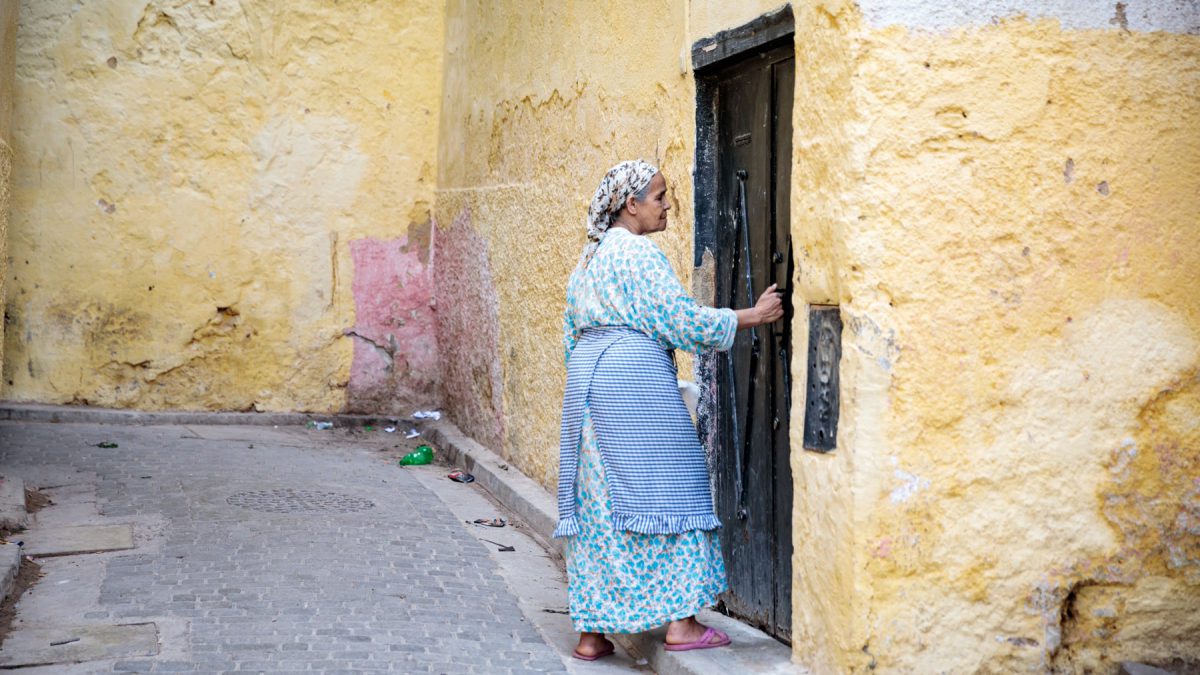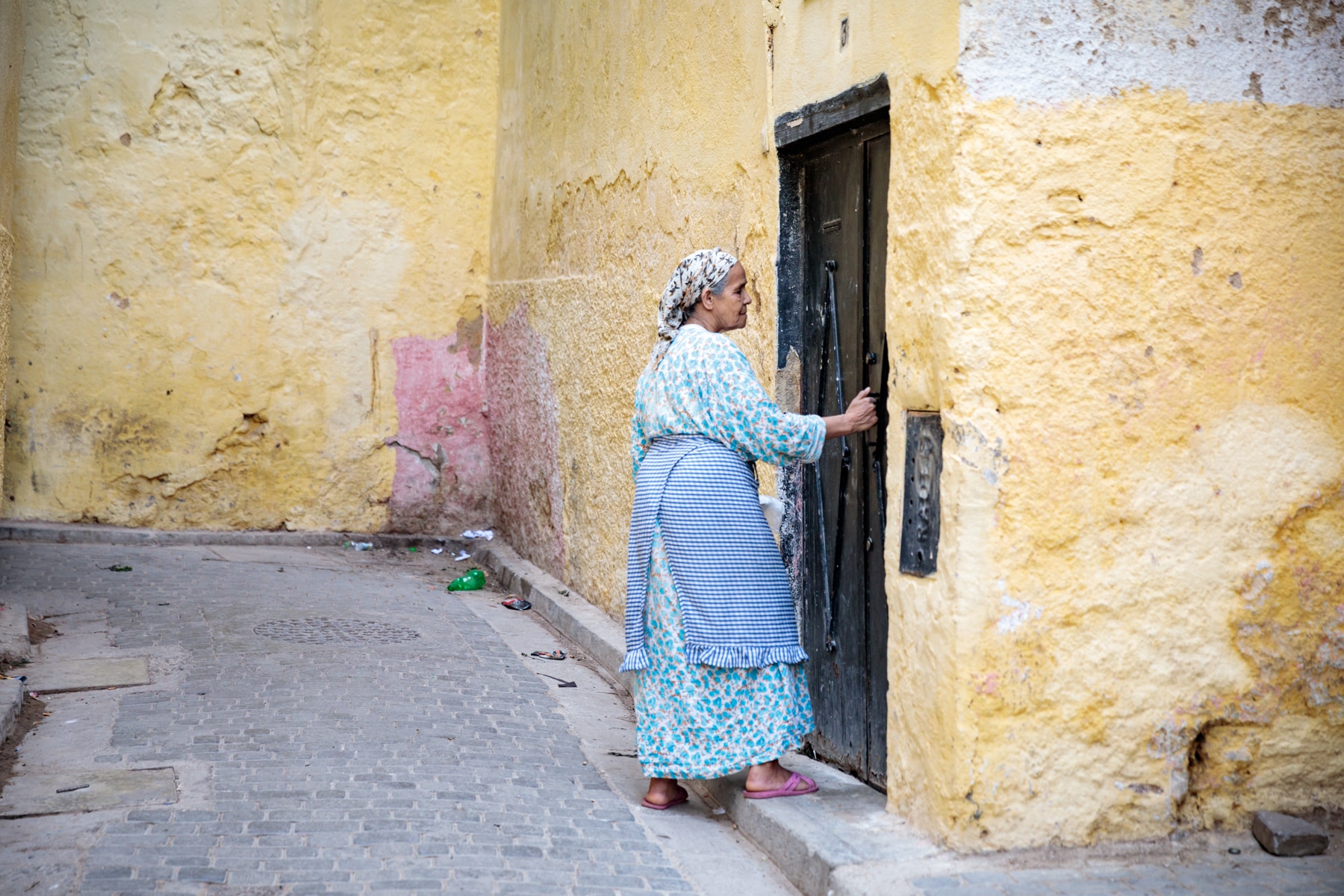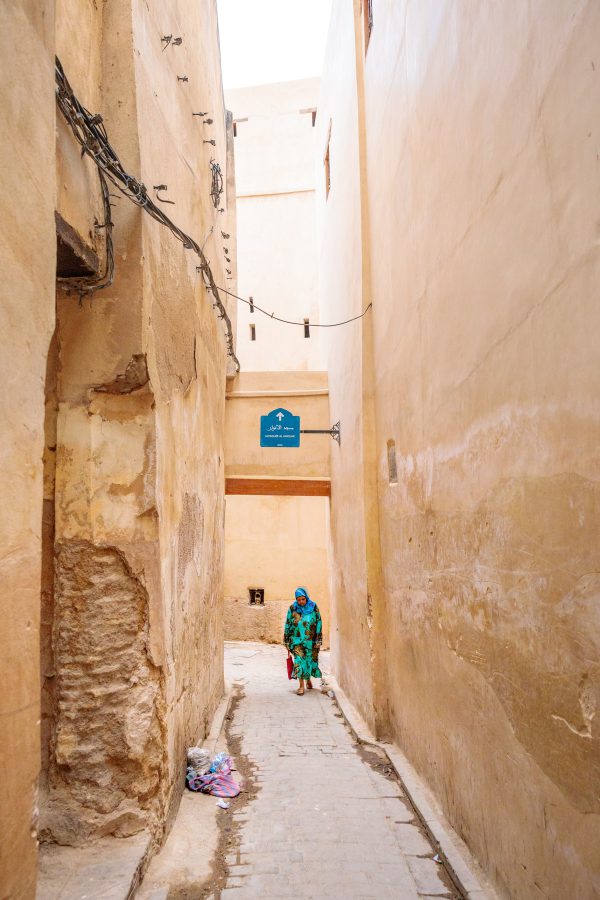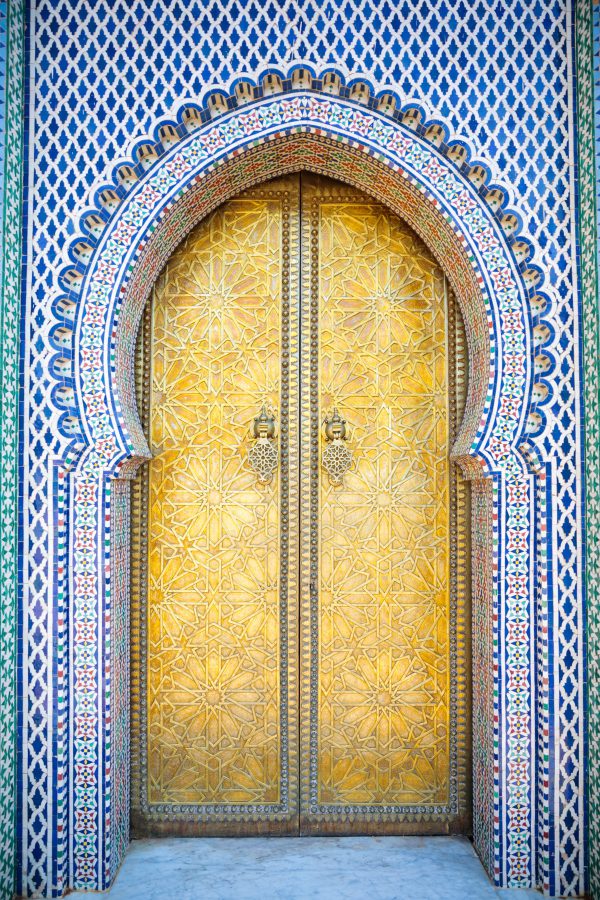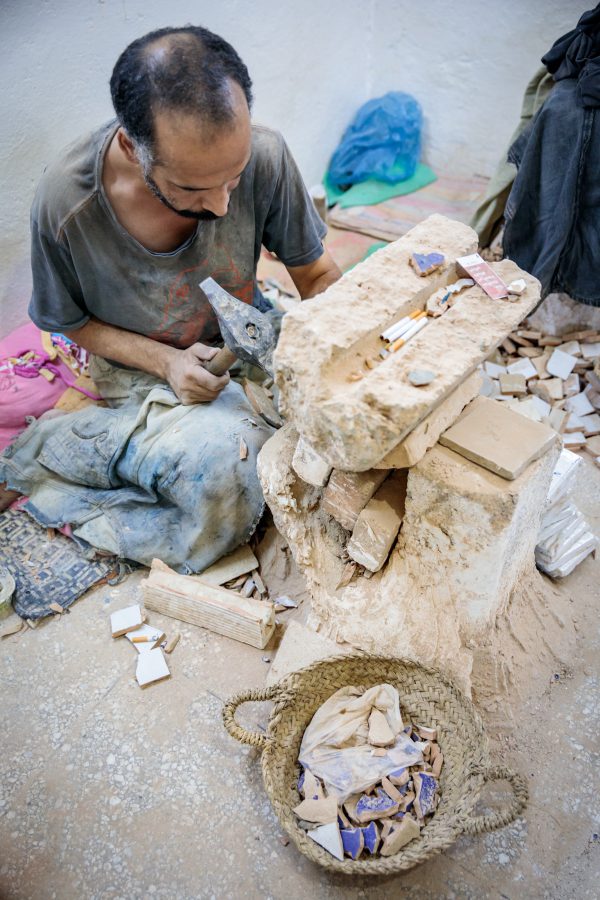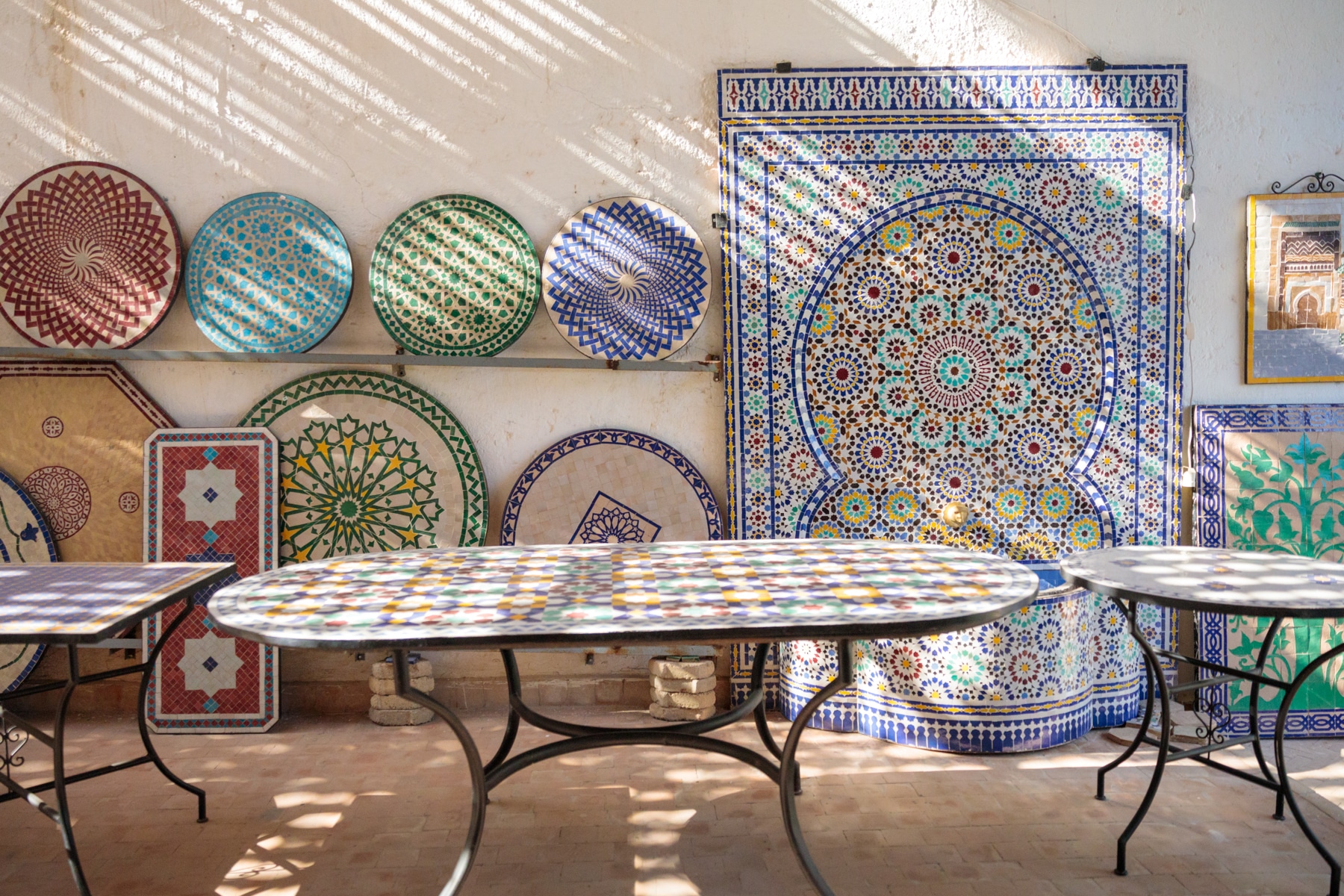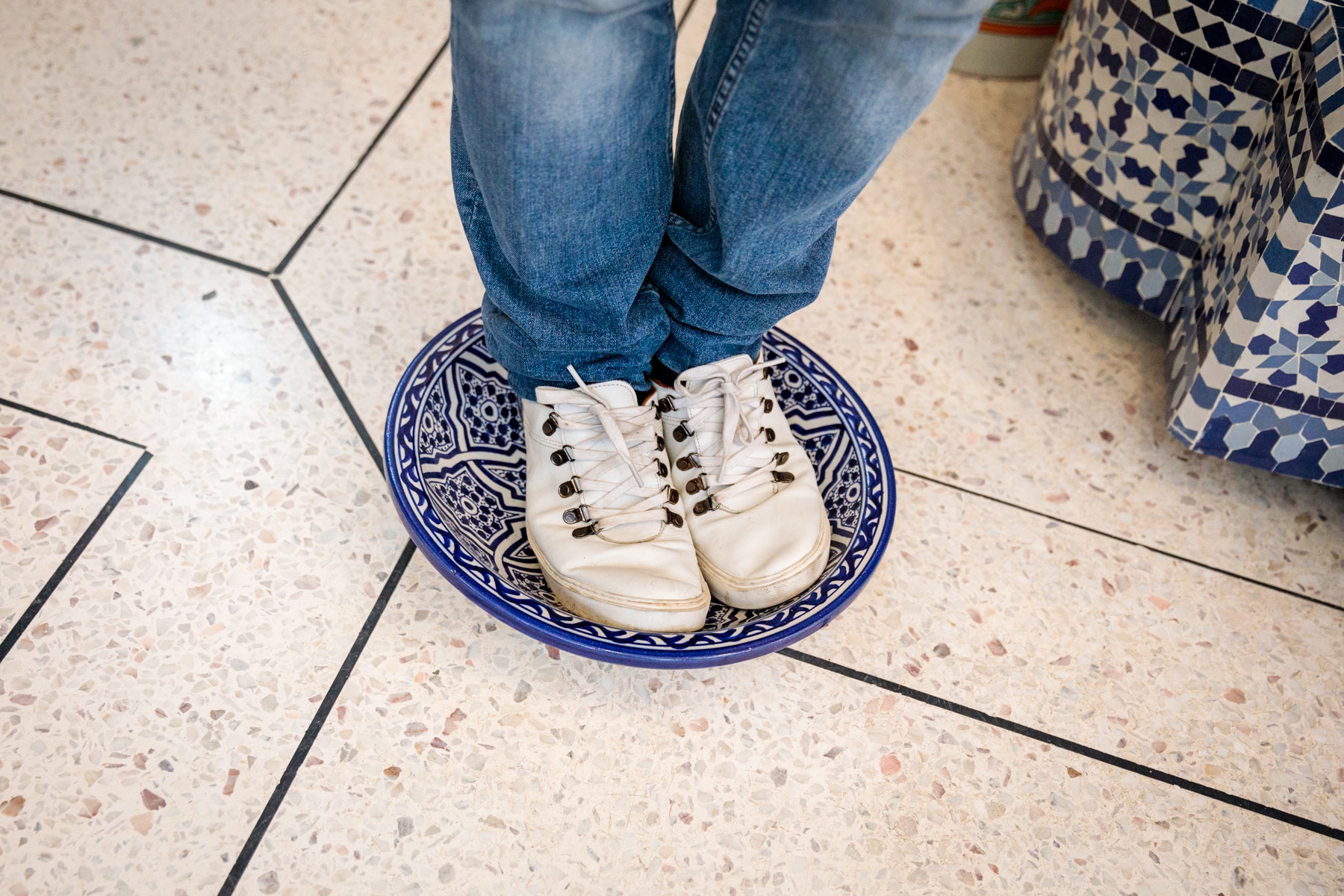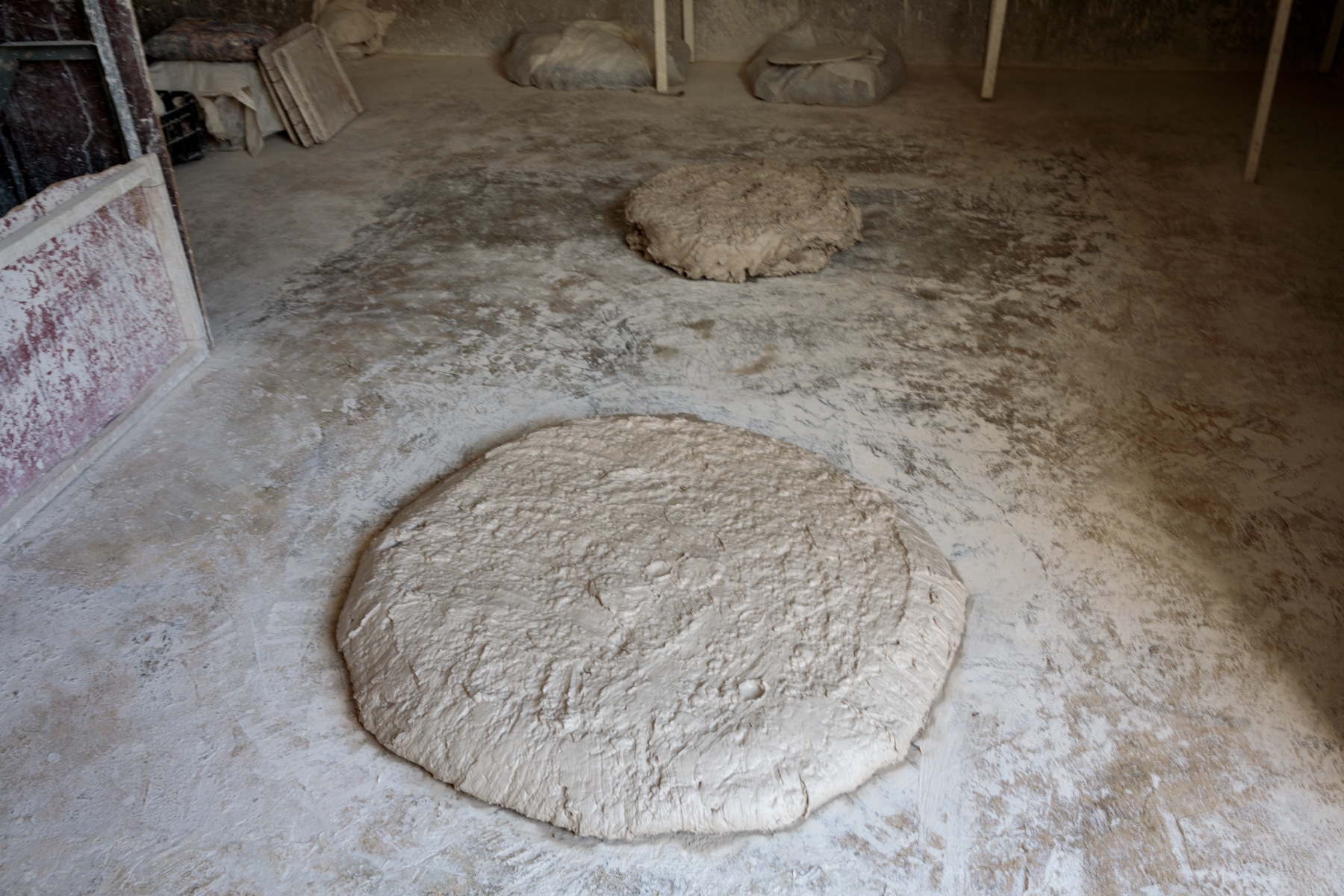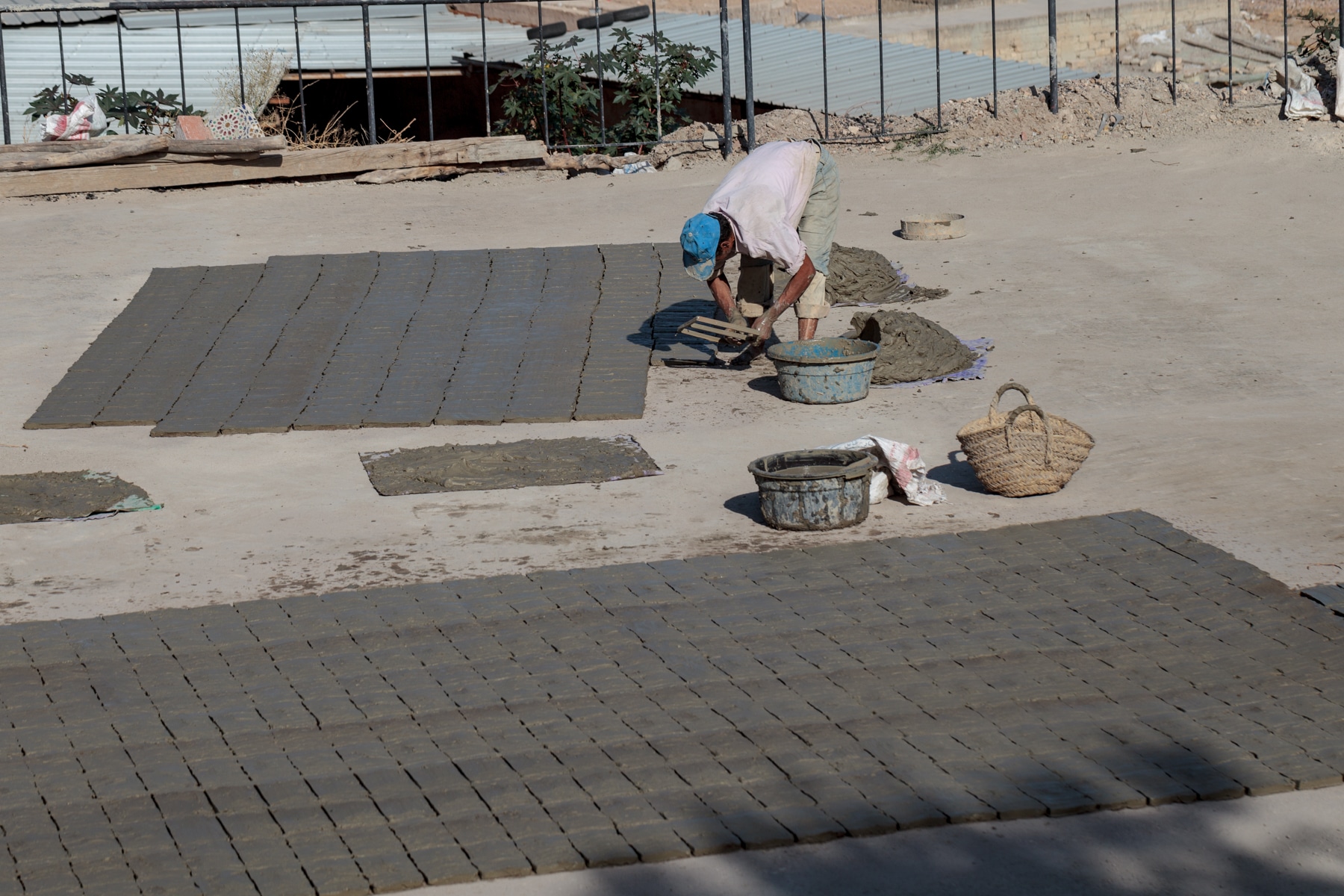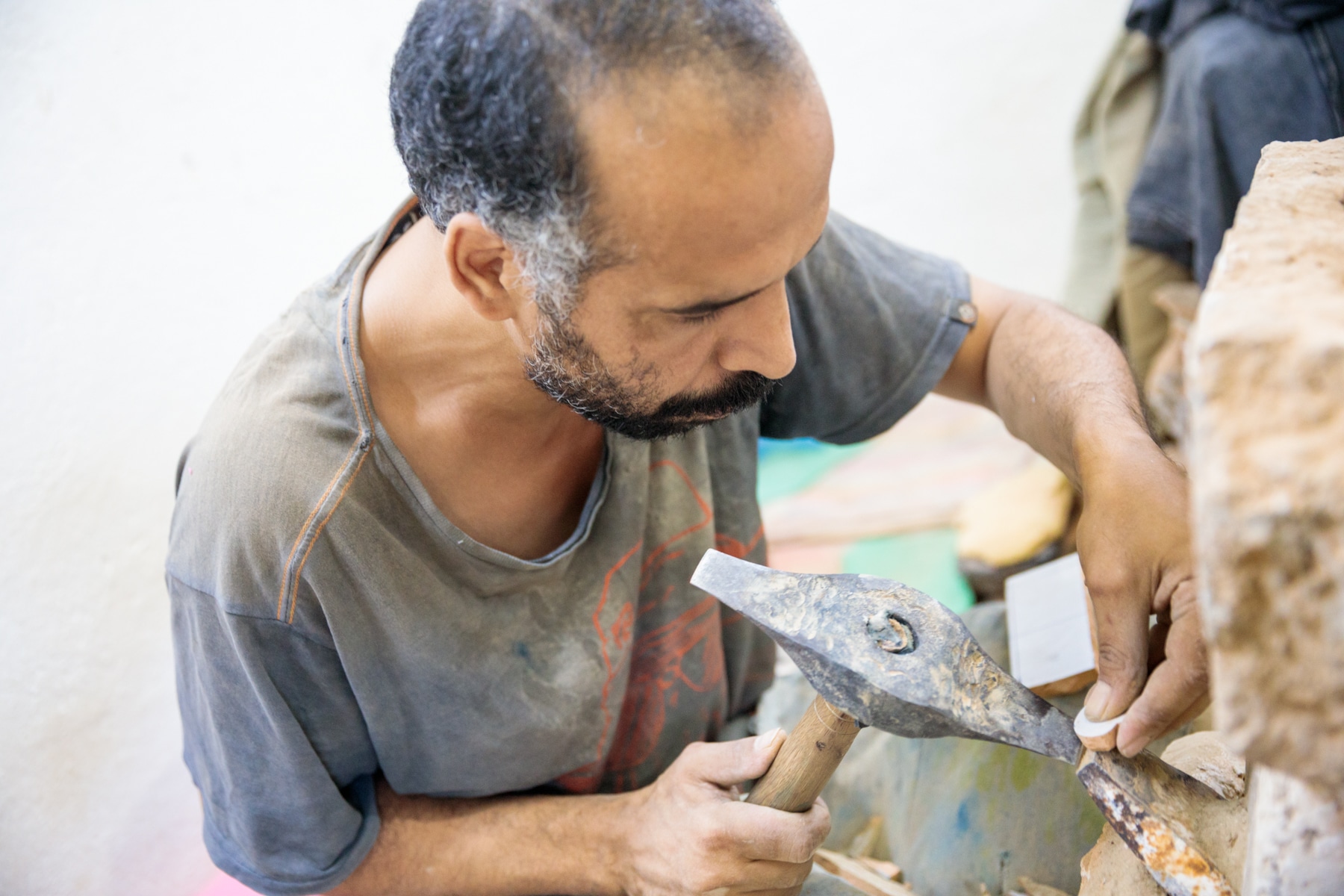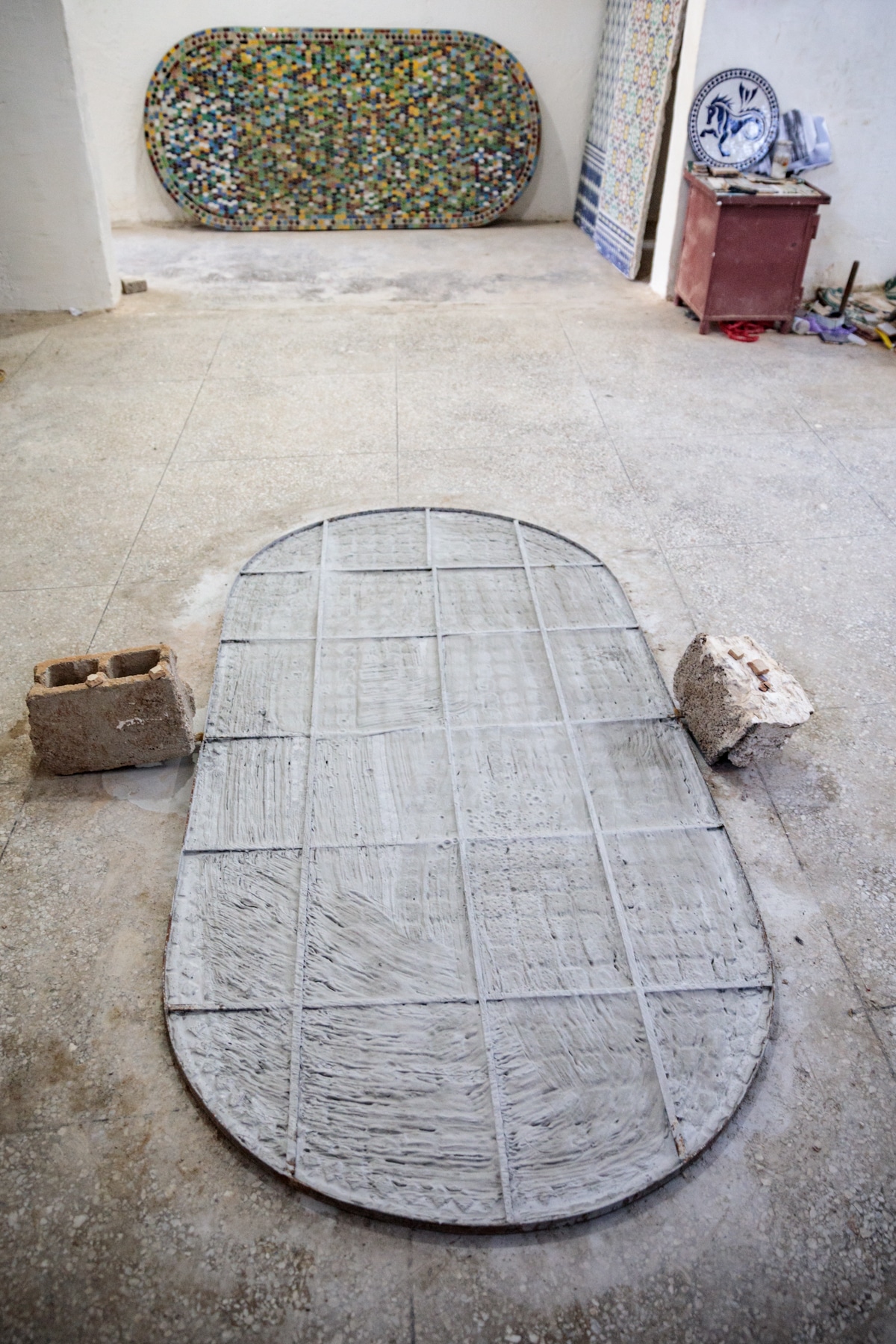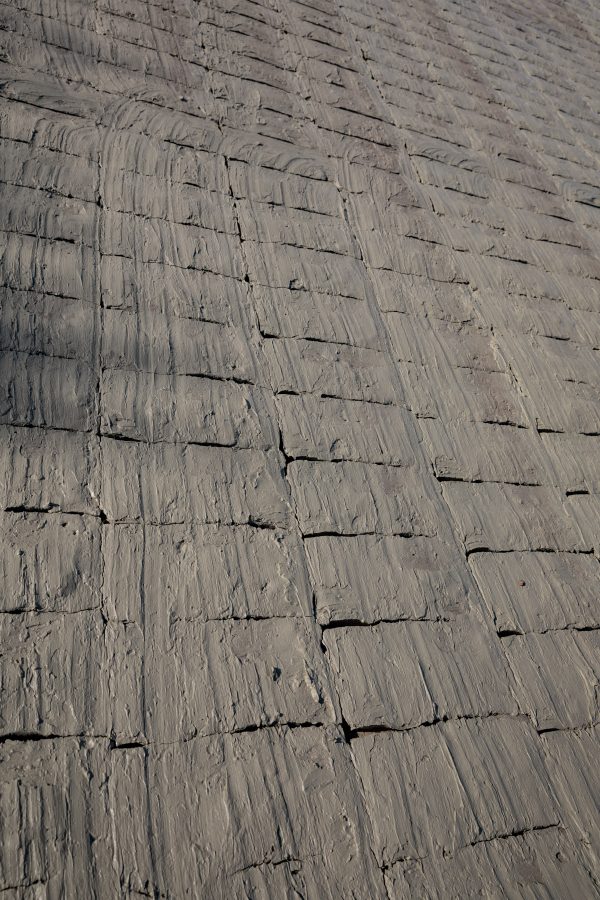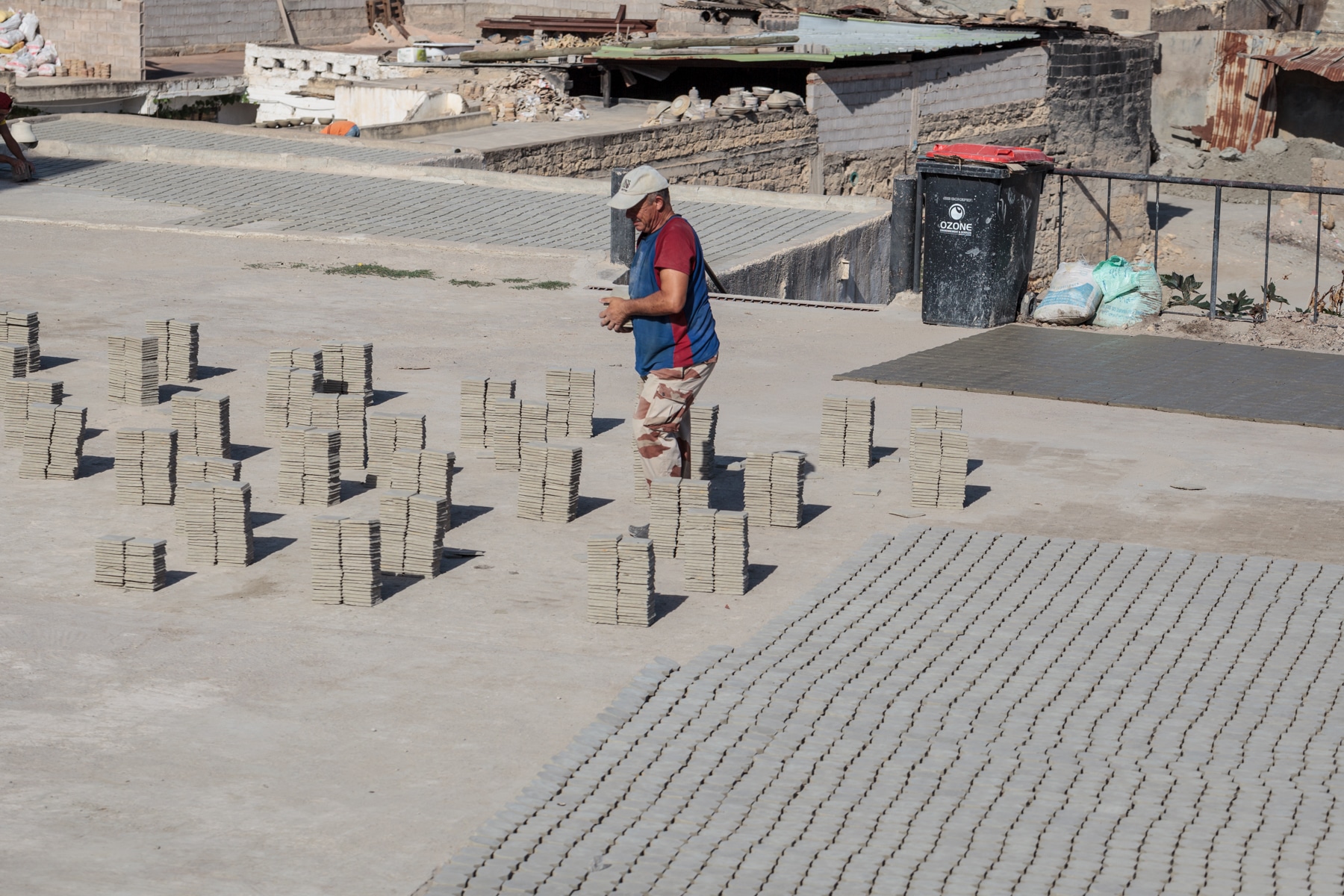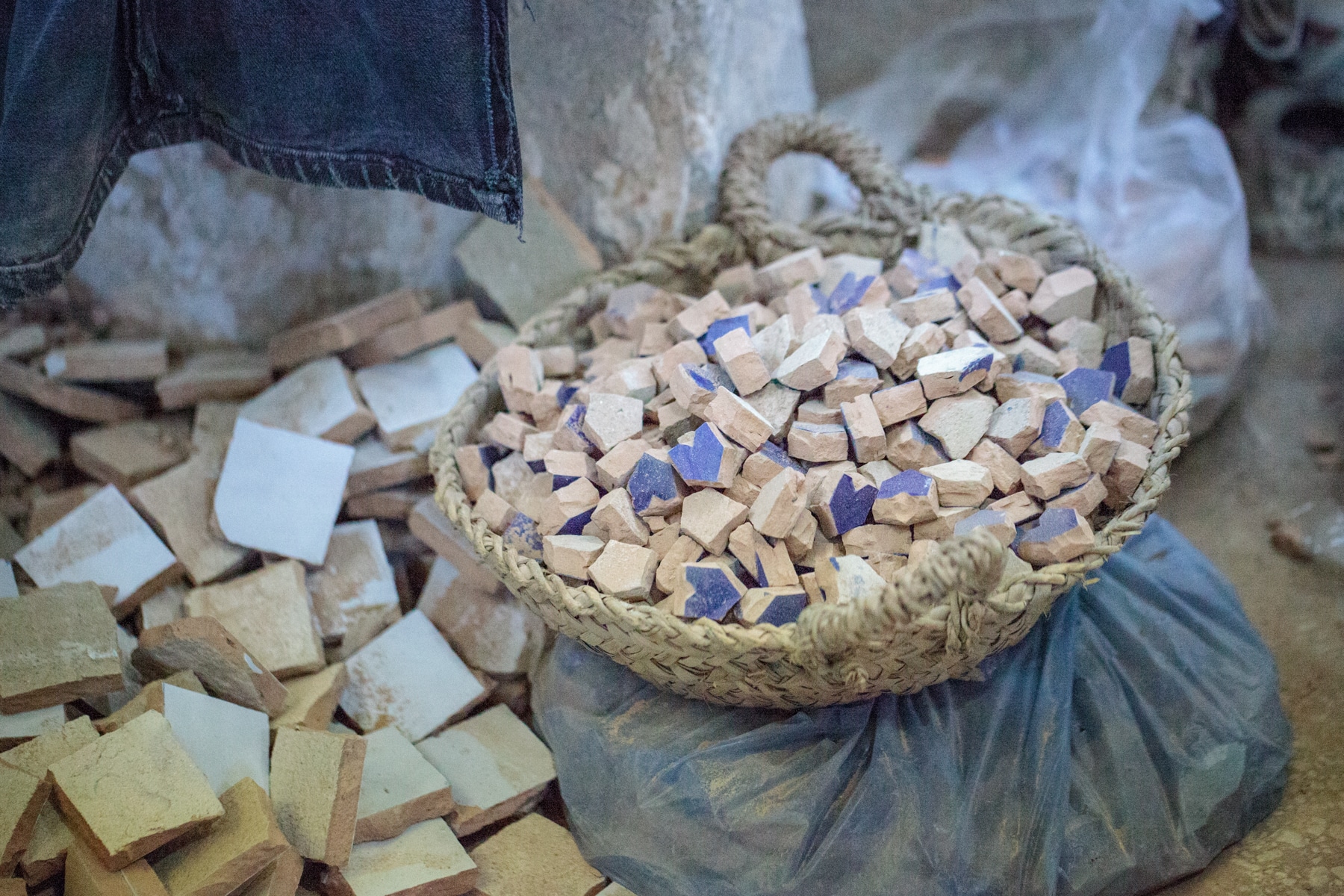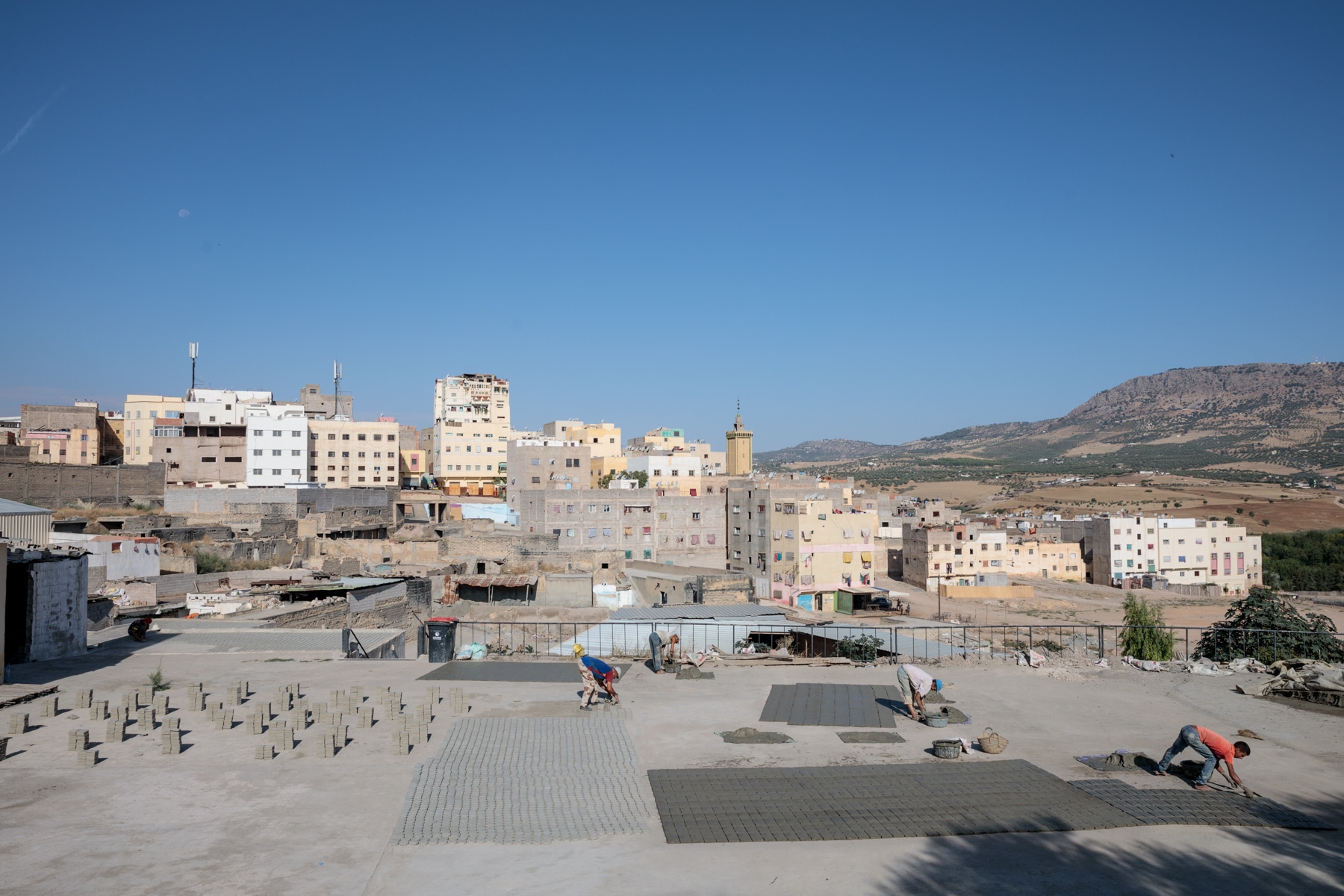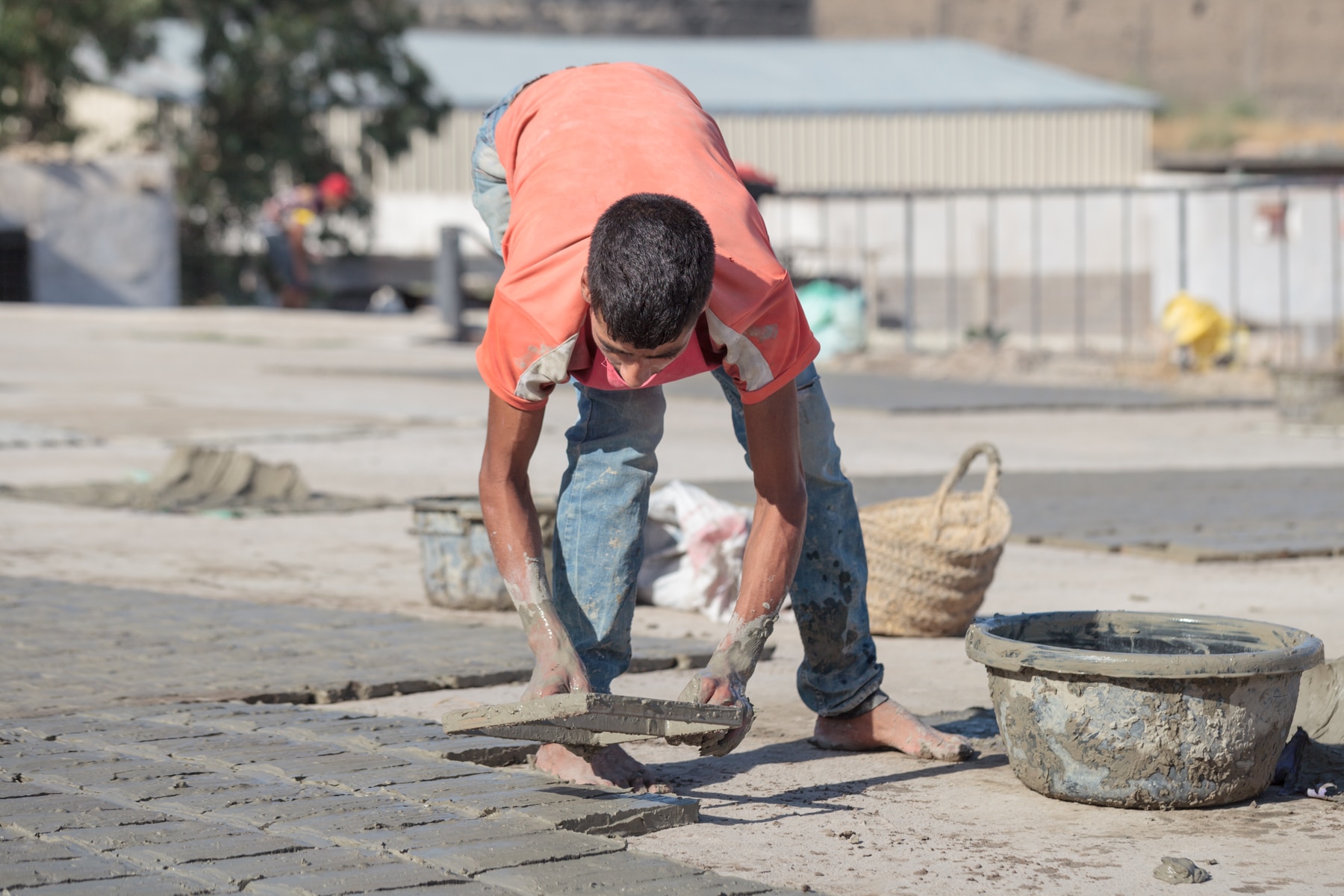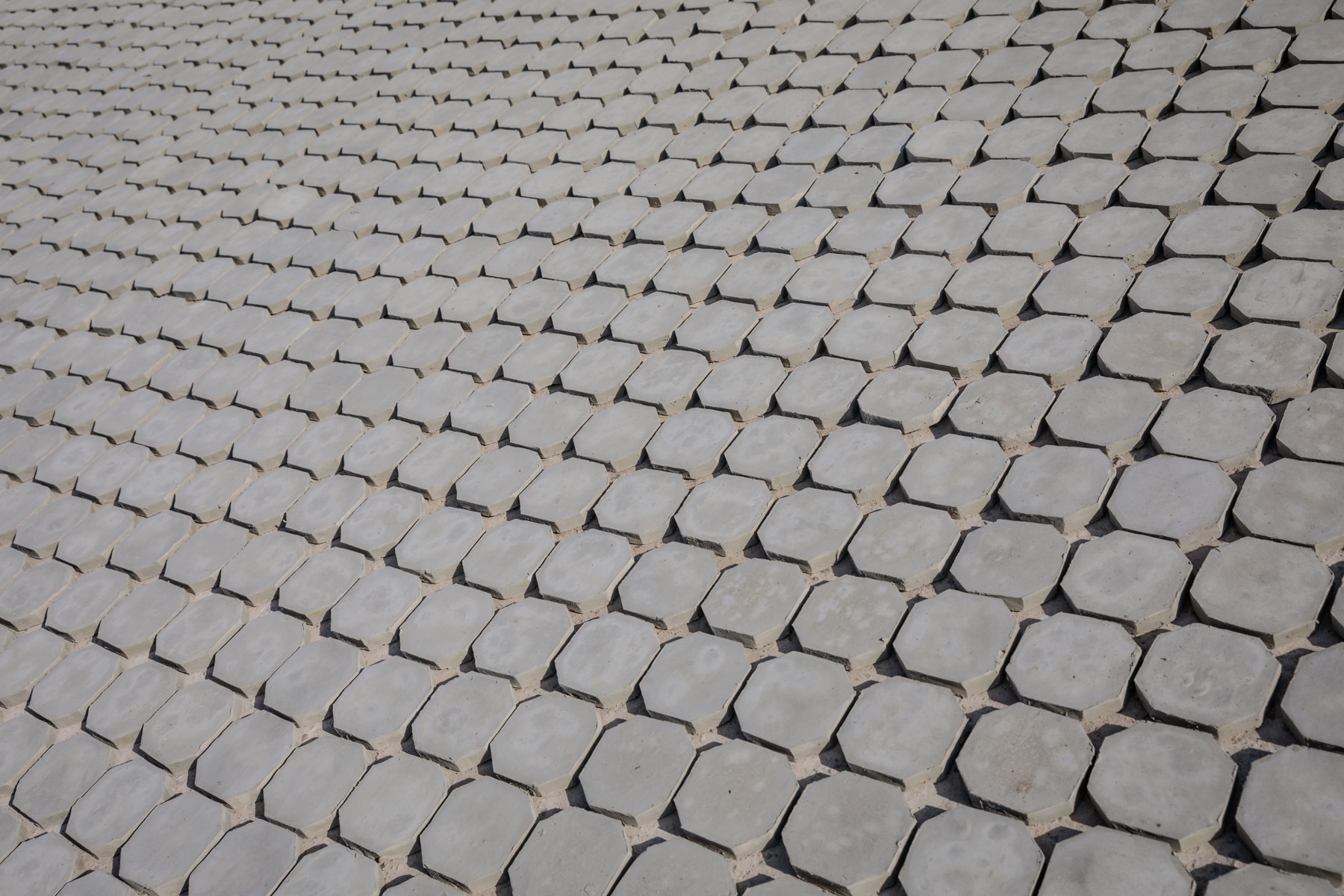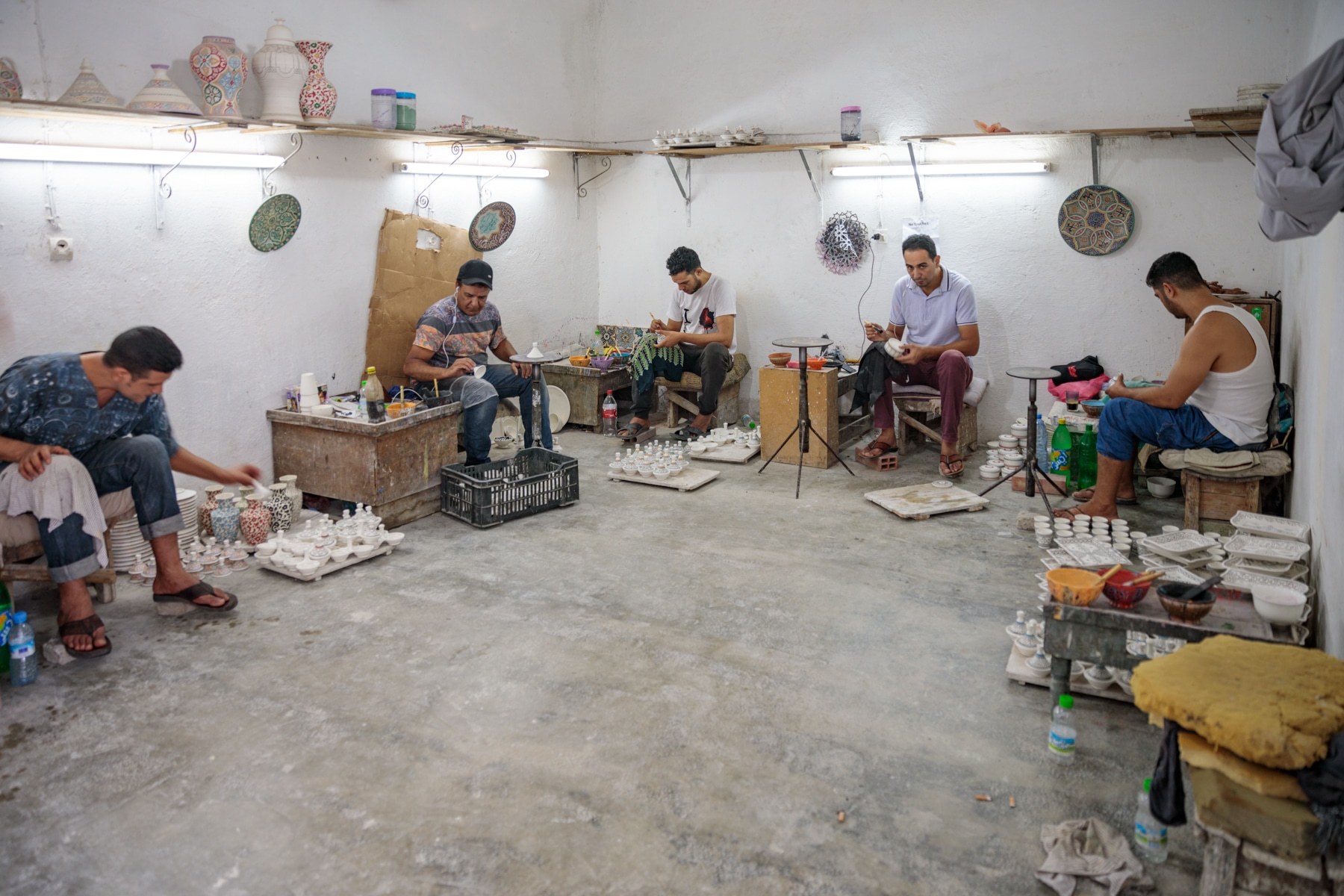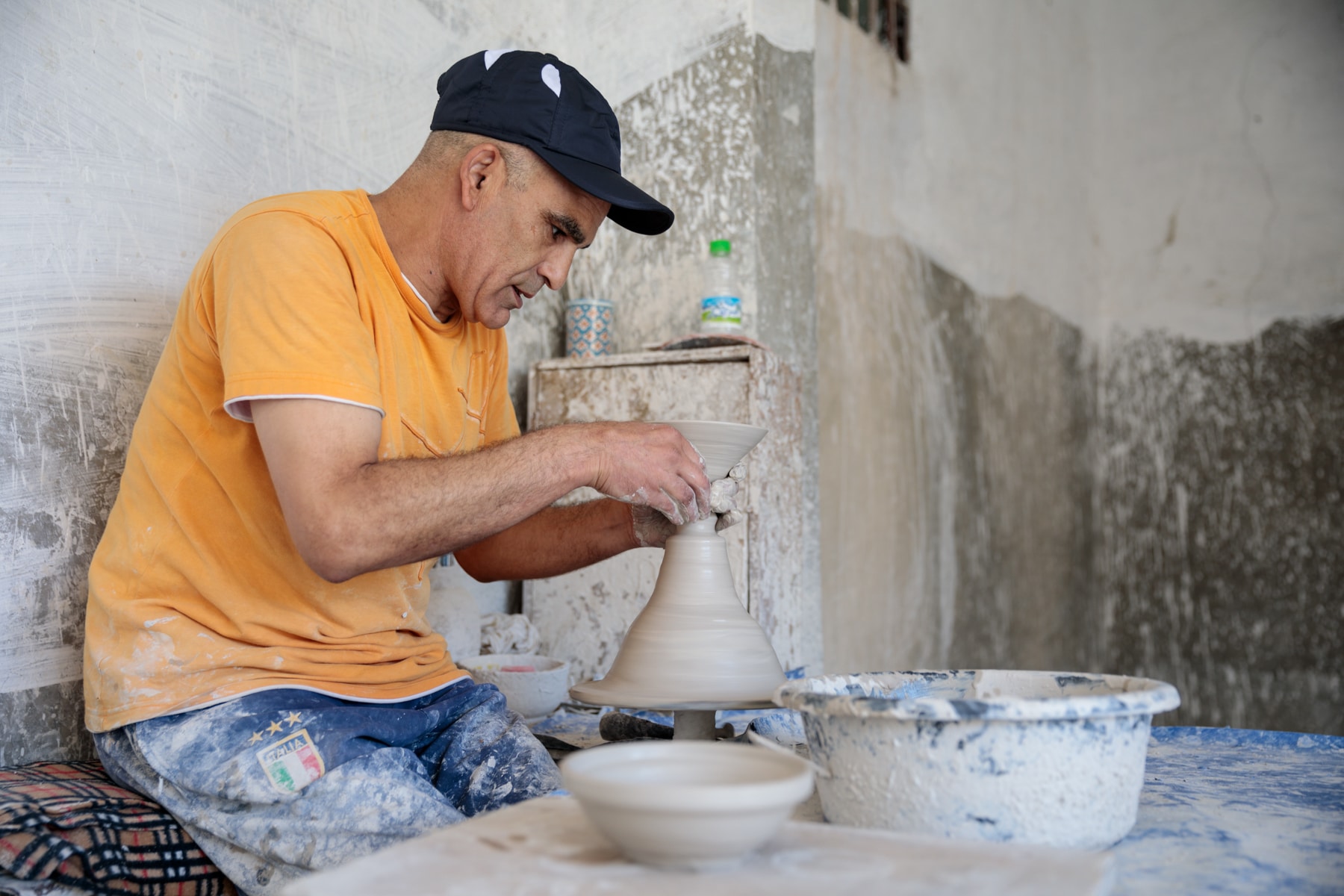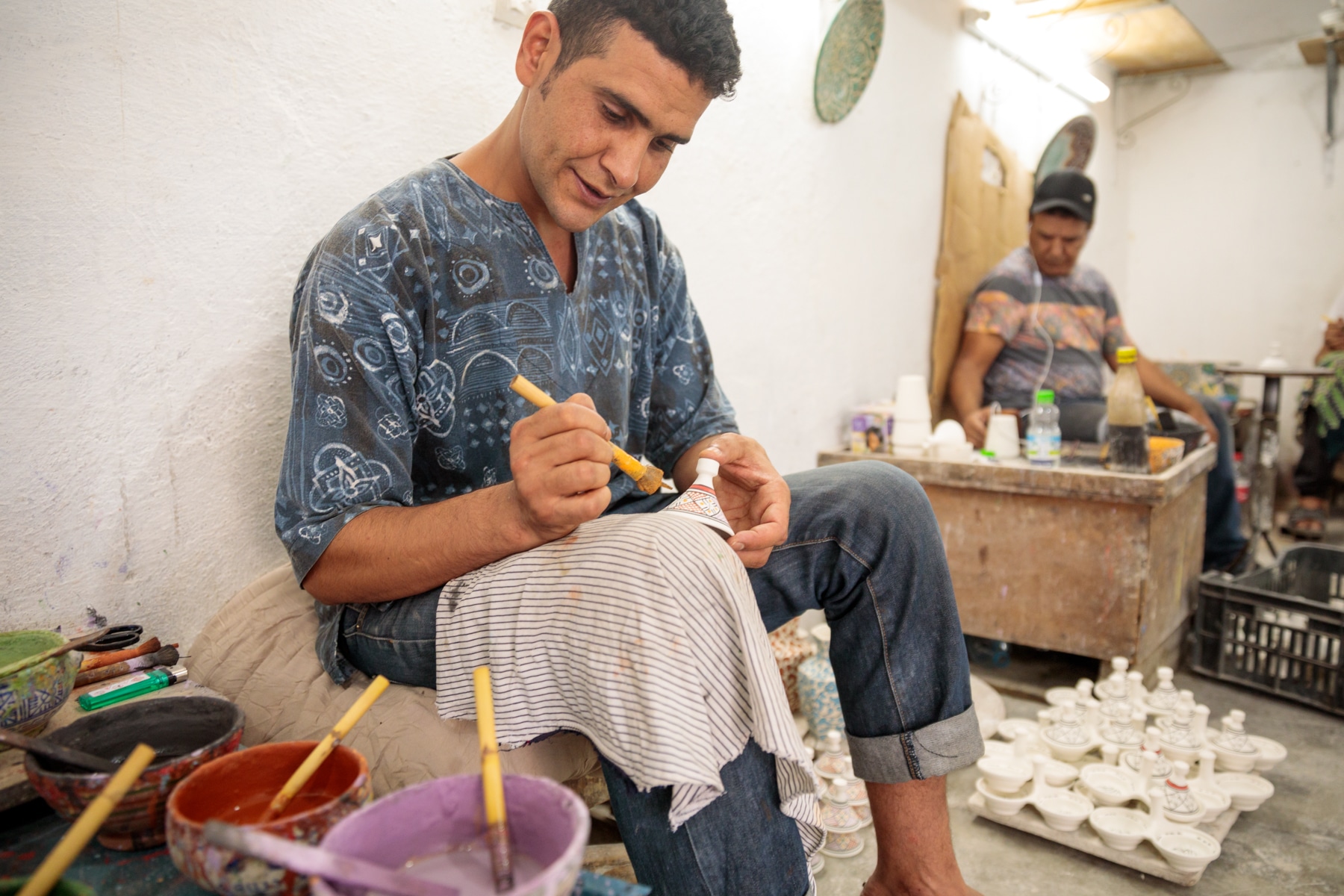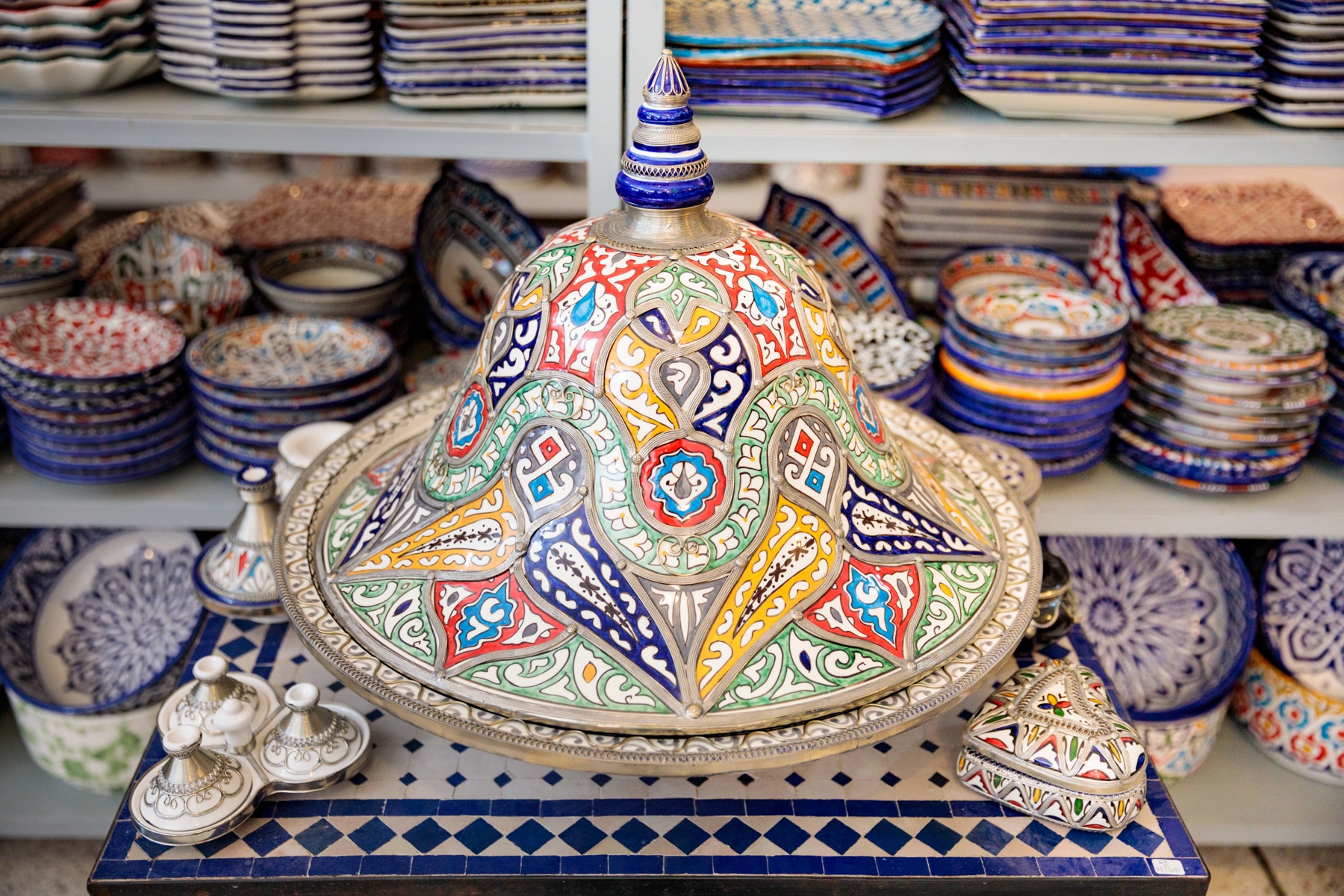City of Fez caped me occupied. I couldn’t let go of any lens. I had to explore more…
Moroccan mosaic and tiles

Chouara Tanner
December 27, 2018
Magical Fez
December 30, 2018Moroccan tiles
Fez, Morocco
Still astonished by the narrowness of the streets, all the action and the life flow generally… Well, everything took my attention.
The Royal Palace of Fez (Dar el Makhzen)
Palace can be appreciated only from the outside, behind those beautiful (locked) doors are extensive landscaped grounds, intricate mosaics, small mosques, painted ceilings, and a madrasa.
I thought I am gonna stop at one of the markets, but since I am a mosaic enthusiast, I had to see where the handcraft takes place.
After filtering the clay a skilled craftsmen flattens the clay by hand into a square shapes. This part is very important because the clay must be compact with no air bubbles in it.
The tiles are now placed in the natural wood fired kilns. In traditional moroccan kilns heat circulates unevenly giving slightly different tones of colors to each tile.
The second craftsmen roughly cuts and shapes the tiles with the help of a sharp tool that looks like a combination of an axe and hammer, this medieval tool is called “menkach” and it is hand sharpen on a natural rock.
After a three component ISO certified glue is applied. It takes 24 hours for glue to dry completely. Once the tiles are dry, sheets are ready to be installed.
The clay is soaked in the water until it reaches a soft texture. Once the clay is soft enough to handle it is filtered by hand.
Clay is kept and stored in a cool dry place after being shaped, molded and flattened, to be readied for a first bake.
The end results are all these different types of shaped pieces that will be assembled to create the zellige patterns.
After tiles are well dried another skilled craftsmen applies the colors to the upper part of the tiles.
… enthusiasts will find an extra interest in the town of Safi, considered the capital of Moroccan pottery.
Pottery is generaly covered with complex geometric, arabesque and beautiful, rich patterns. Very hard to miss it.


